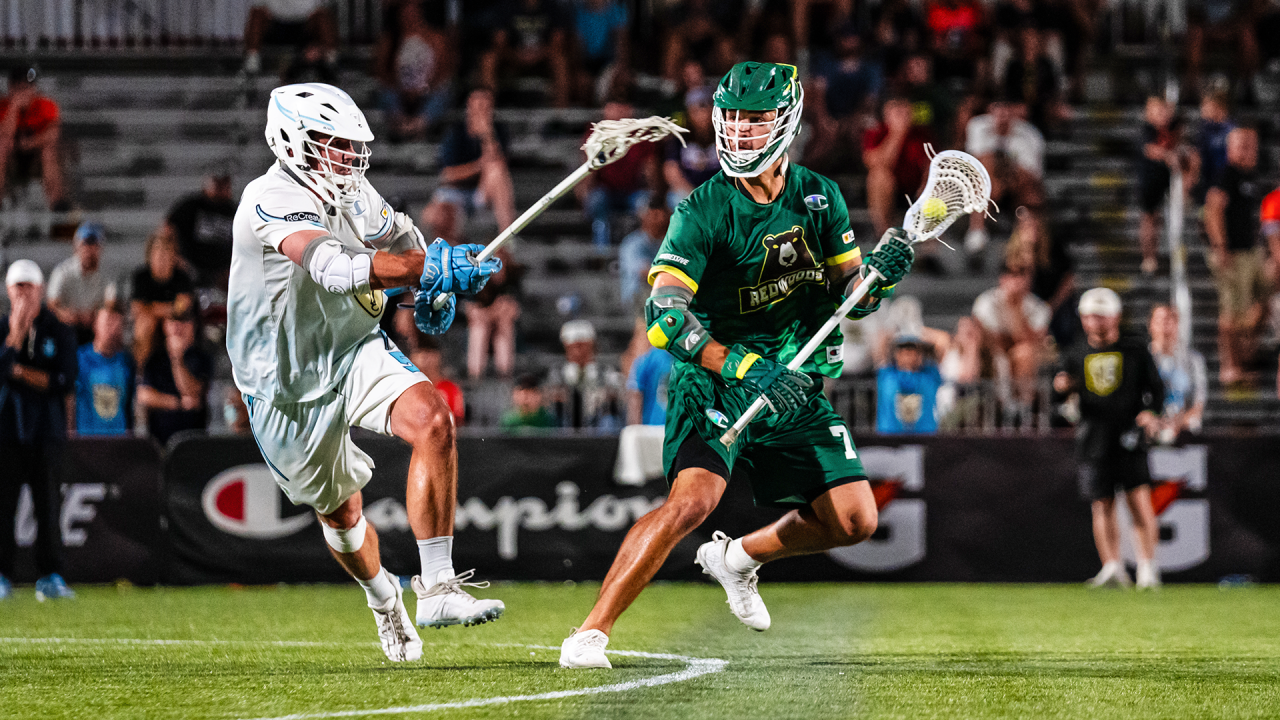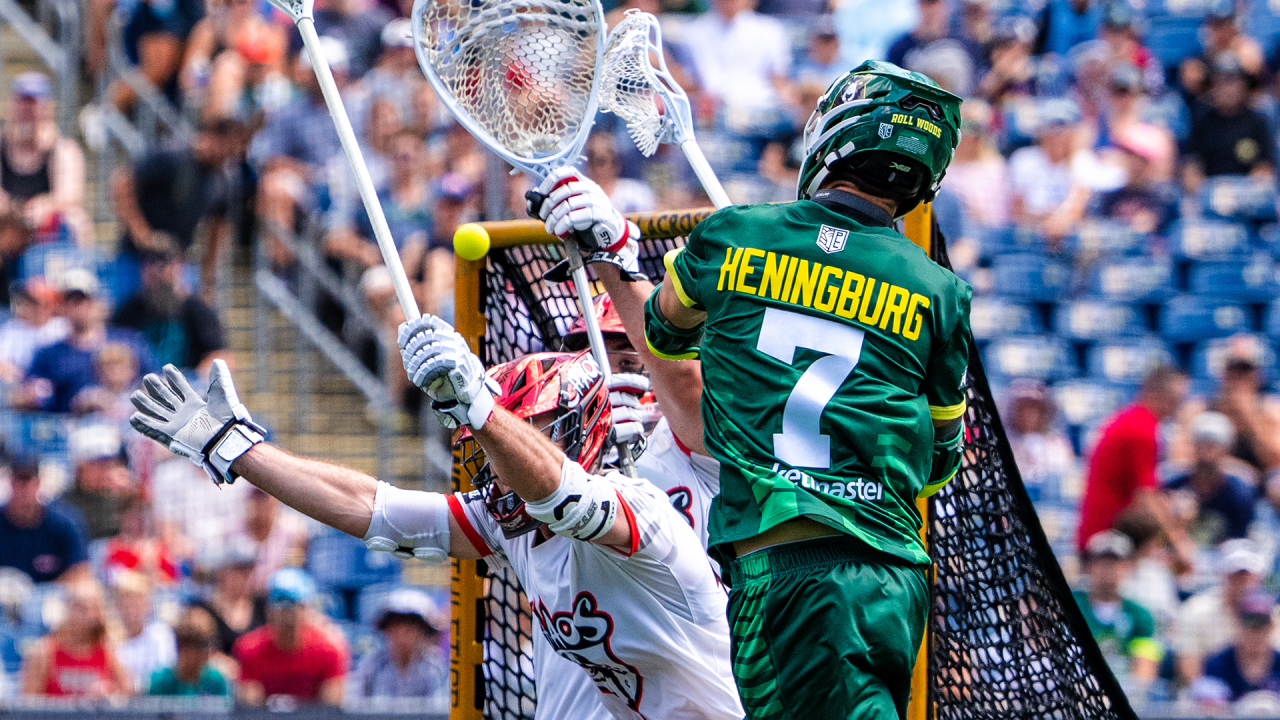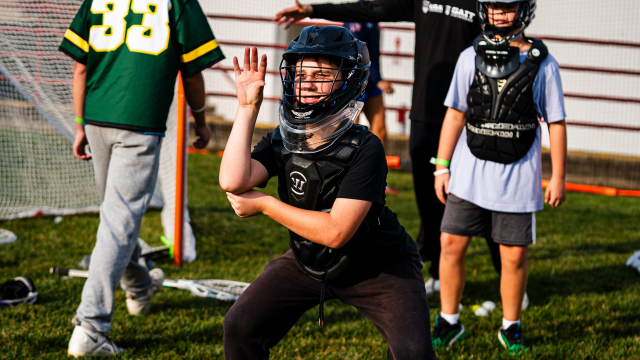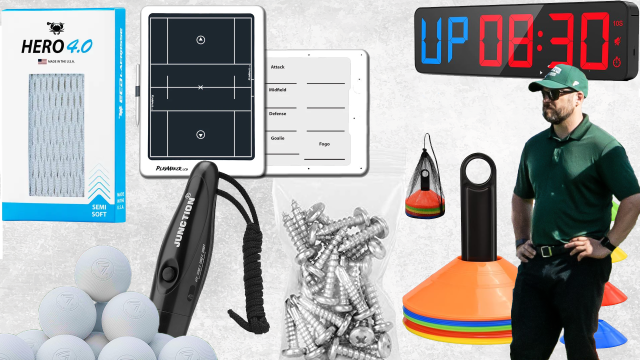
Jules Heningburg: How to Get Topside on Your Defender
Jules Heningburg emerged as one of the PLL’s first star offensive players when he poured in 25 goals and 39 points in the league’s inaugural season in 2019. After missing 2020 due to COVID-19 restrictions, he’s combined to tally 39 points in the last two seasons, including scoring 12 goals in 2023.
Heningburg, an All-American at Rutgers, is lethal when he gets topside.
“When you get topside with your right hand towards the middle of the field, basically what the defense has to do is slide from the crease or slide off of the adjacent man next to you,” Jules Heningburg said. “Either way, that’s a lot of pressure on the defense.”
If the defense slides adjacent to the offensive player, it’s called “coming off a drift.”
“If you throw to your teammate, whose defender just came off the drift, usually, he or she has a great shooting angle,” Heningburg said.
If they come off the crease?
The backside of the pipes are pretty open,” Heningburg said. “If they decide that they don’t want to slide, you are in the middle of the defense with your hands-free. That’s the hardest shot to save in lacrosse.”
To get topside, Heningburg uses a move that mimics the fast footwork needed to throw a jab in boxing and epitomizes the reputation lacrosse has as the “fastest game on two feet.” But the secret sauce is in the mentality.
Get Your Head Right
A good salesperson has confidence — even for moonshot deals. Heningburg wants young players to go into this move with the same mentality.
“You have to have the mentality that you are going to beat the player in front of you,” Heningburg said. “If you go into your dodge and you are just worried about what is going to happen after you get your feet moving, you’re most likely not going to sell your defender.”
Step One
The first order of business is to take a step in the direction you intend to go.
Young players commonly take too wide of a step or go too far in front.
“If you step with your right foot wide and go to jab with your left foot, there’s too much space in between your feet where you can’t move right to left,” Heningburg said. “Same thing if you go forward. Your leg is going to bend straight and not in that angled lunge position.”
Exactly how far to step will depend on your body and the game situation. But ultimately, “It has to be enough in front of you that you are gaining ground but not too far in front of you that you can’t get onto that other leg successfully,” Heningburg said.
Step Two
The first step is all about setting up for the second step, which involves going in the opposite direction you intend to go. You’re trying to sell the defender that you’re about to bolt down the ally.
“If you are using topside and you are attacking at your defender, you would step hard with your right foot and step even harder with your left foot to sell like you are going to take that ally,” Heningburg said. “That allows you to explode off that left foot. It’s really a cut. That propels you topside.”
After the Defender Bites
If the defender bites like you thought they would, plan A is to score a goal.
“If you get to the middle of the field, hands-free, you want to shoot it…the defender comes off the drift, sail forward,” Heningburg said. “If you get to the middle of the field and they slide through the crease, look to bang it through those pipes.”

Plan B
Not every defender is going to fall for the move. If they don’t, Heningburg instructs players to go to phase two. You can bounce away and re-attack, set up a change of direction to roll back down the ally or engage physically. Or, you can opt for Heningburg’s go-to plan B, which is to slow his feet down and hesitate.
“I make my move and right away realize that I am not going to get a step running on him,” Heningburg said. “ I am going to slow my feet down and speed back up. Then, I can catch him off guard…and draw that crease slide.”
Practice, Practice, Practice
The move is simple to practice in your backyard. You only need one person — a parent, sibling or friend.
“Just attack at them,” Heningburg said. “Try to get them to bite that you are going down that ally, selling that ally, and getting topside. The more you can see how what you do forces a response from your defender, whether it’s your hands moving faster, whether you need to jab harder on that second step or get down the ally faster.”
Setting up a camera can help you fine-tune your tactics.
“You’ll see, ‘I jabbed harder, and his hips opened up,’” Heningburg said. “That’s something you can keep practicing and hopefully bring to a game situation.”
Beth Ann Mayer
Beth Ann Mayer is a Long Island-based writer. She joined USA Lacrosse in 2022 after freelancing for Inside Lacrosse for five years. She first began covering the game as a student at Syracuse. When she's not writing, you can find her wrangling her husband, two children and surplus of pets.

Categories
Tags
Related Articles




